Building Maintenance Blueprint: Industry Standards and Best Practices
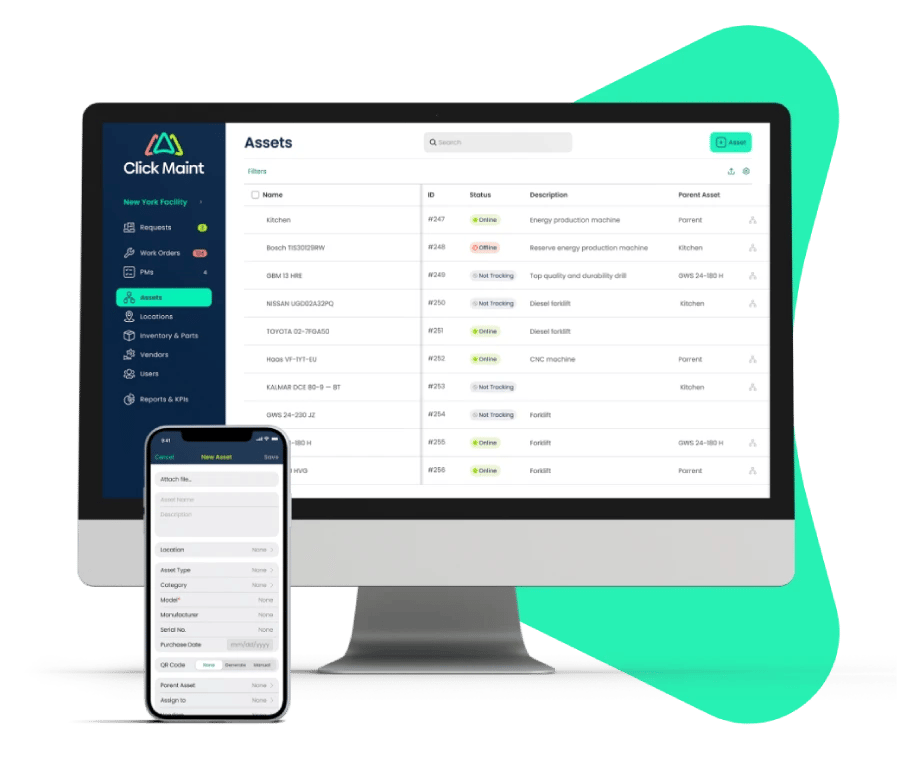
TABLE OF CONTENTS
Building maintenance is the comprehensive process of ensuring that structures, facilities, and systems within buildings are effectively preserved, repaired, and managed to uphold their functionality, safety, and aesthetic appeal over time. It includes a wide range of tasks, from routine inspections and preventive maintenance to repairs, corrective actions, and upgrades.
What is Building Maintenance?
Building maintenance refers to the proactive and reactive efforts undertaken to sustain the condition and performance of buildings, including various elements such as structural integrity, mechanical systems, interior and exterior components, and compliance with regulatory standards. It involves regular inspections, timely repairs, and strategic planning to mitigate potential issues and extend the lifespan of the building.
Types of Buildings Requiring Maintenance
Building maintenance is essential for various types of structures, each with its unique set of requirements and challenges.
Residential Buildings
Residential buildings include a wide range of structures, including single-family homes, apartments, condominiums, and townhouses. Maintenance in residential buildings is important for ensuring the comfort, safety, and well-being of occupants. Key maintenance tasks for residential buildings include:
- Exterior Maintenance: Regular inspection and upkeep of roofs, siding, windows, and doors to protect against weather damage and maintain curb appeal.
- Interior Maintenance: Routine checks and repairs of plumbing, electrical systems, HVAC units, and appliances to ensure functionality and prevent potential hazards.
- Grounds Maintenance: Landscaping, lawn care, and maintenance of outdoor amenities such as driveways, walkways, and fences to enhance the aesthetics and usability of the property.
Commercial Buildings
Commercial buildings include a wide range of structures used for business, retail, office, and hospitality purposes. Maintaining these buildings is critical for creating a safe, welcoming environment for employees, customers, and visitors. Key maintenance tasks for commercial buildings include:
- Facility Maintenance: Regular inspection and maintenance of structural components, including roofs, walls, and foundations, to ensure stability and safety.
- Mechanical Systems Maintenance: Scheduled servicing of HVAC systems, plumbing, electrical systems, and elevators to optimize performance and minimize downtime.
- Safety and Security Measures: Installation and maintenance of fire detection and suppression systems, security cameras, access control systems, and emergency lighting to protect occupants and assets.
Industrial Buildings
Industrial buildings are specialized structures used for manufacturing, production, warehousing, and distribution purposes. Maintenance in industrial facilities is essential for maximizing productivity, ensuring compliance with regulations, and minimizing downtime. Key maintenance tasks for industrial buildings include:
- Equipment Maintenance: Regular inspection, lubrication, and repair of machinery, conveyor systems, and production equipment to prevent breakdowns and maintain operational efficiency.
- Facility Upkeep: Cleaning, painting, and repair of floors, walls, ceilings, and other structural elements to maintain a safe and hygienic working environment.
- Environmental Compliance: Compliance with environmental regulations, including waste management, pollution control, and hazardous materials handling, to minimize environmental impact and avoid penalties.
Objectives of Building Maintenance
Building maintenance serves several objectives, all aimed at ensuring the longevity, safety, efficiency, and appeal of structures. Here are the primary objectives of building maintenance:
Preservation of Structural Integrity
One of the key objectives of building maintenance is to preserve the structural integrity of the building. This involves regular inspections, maintenance, and repair of structural components such as foundations, walls, roofs, and floors. By identifying and addressing structural weaknesses early on, maintenance helps prevent minor issues from escalating into major structural failures, ensuring the stability and durability of the building over time.
Ensuring Safety and Security
Another key objective of building maintenance is to ensure the safety and security of occupants, visitors, and assets within the building. This includes maintaining essential safety systems such as fire detection and suppression systems, emergency lighting, exit signage, and security alarms. Regular maintenance of mechanical systems, electrical wiring, and building access controls also helps mitigate potential safety hazards and security risks, creating a secure environment for everyone within the building.
Optimization of Energy Efficiency
Building maintenance plays an important role in optimizing energy efficiency and reducing operational costs. By regularly inspecting, servicing, and upgrading building systems such as HVAC (heating, ventilation, and air conditioning), lighting, insulation, and windows, maintenance helps ensure that these systems operate at peak efficiency. This not only reduces energy consumption and utility bills but also contributes to environmental sustainability by lowering the building's carbon footprint.
Improving Aesthetics
Maintaining the aesthetic appeal of a building is another important objective of building maintenance. This includes regular cleaning, painting, and repair of exterior surfaces such as facades, windows, and doors to maintain a fresh and attractive appearance. Interior maintenance tasks such as flooring, wall, and ceiling repairs, as well as landscaping and grounds maintenance, also contribute to enhancing the overall aesthetics of the building. A well-maintained building not only creates a positive impression on occupants and visitors but also helps preserve property value and attractiveness in the real estate market.
Building Maintenance Strategies
Building maintenance comprises various maintenance management strategies that work together to ensure the proper functioning and longevity of structures.
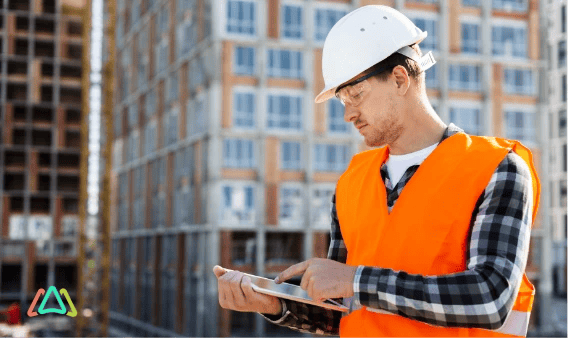
1. Routine Inspections
Routine inspections are fundamental to building maintenance, providing valuable insights into the condition of the structure and its systems.
Frequency and Types of Inspections:
Routine inspections should be conducted regularly, with the frequency depending on factors such as the type of building, its usage, and environmental conditions. Common types of inspections include:
- Daily Walkthroughs: Quick visual checks to identify any immediate issues or safety hazards.
- Monthly Inspections: Thorough assessments of building systems and components, including mechanical, electrical, and plumbing systems.
- Annual Inspections: Comprehensive evaluations of the entire building, including structural elements, to identify any potential maintenance needs.
Identification of Common Issues:
Routine inspections help identify common maintenance issues such as:
- Roof leaks and damage
- Plumbing leaks or blockages
- HVAC system malfunctions
- Electrical wiring problems
- Structural cracks or settlement
By identifying these issues early on, maintenance teams can address them promptly, preventing them from worsening and causing more significant problems.
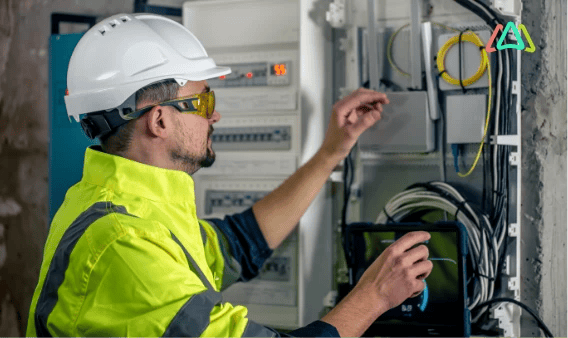
2. Preventive Maintenance
Preventive maintenance aims to address potential issues before they escalate, minimizing equipment failures, downtime, and costly repairs.
Importance and Benefits:
Preventive maintenance offers several benefits, including:
- Increased equipment reliability and lifespan
- Reduced risk of unexpected breakdowns and disruptions
- Lower repair costs and maintenance expenses
- Improved safety for occupants and visitors
- Enhanced energy efficiency and operational performance
Key Tasks and Scheduling:
- Regular lubrication and servicing of mechanical equipment
- Inspection and cleaning of HVAC filters and ducts
- Testing and calibration of safety systems
- Scheduled replacement of worn-out components
- Implementation of a preventive maintenance schedule tailored to the specific needs of the building and its systems.
- Following a building maintenance checklist
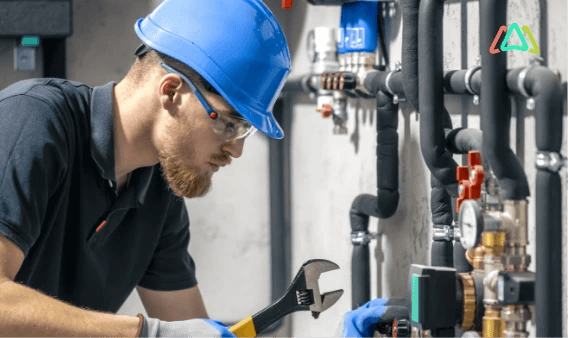
3. Corrective Maintenance
Corrective maintenance involves addressing identified issues promptly to restore the proper functioning of building systems and components.
Corrective Maintenance Tasks:
- Repairing structural damage or defects
- Fixing plumbing leaks or equipment failures
- Replacing malfunctioning electrical components
- Restoring safety systems to optimal condition
Effective Corrective Maintenance Strategies:
- Prioritizing urgent issues that pose safety risks or impact building operations
- Maintaining a well-stocked inventory of spare parts and other materials for quick repairs
- Implementing a streamlined process for reporting and addressing maintenance requests
- Tracking and analyzing maintenance data to identify recurring issues and root causes

4. Predictive Maintenance
Predictive maintenance utilizes technology and data analysis to anticipate potential failures and perform maintenance proactively.
Predictive maintenance leverages various technologies, including:
- Condition monitoring sensors to track equipment performance and detect anomalies
- Predictive analytics software to analyze maintenance data and predict failure probabilities
- Remote monitoring systems for real-time visibility into building systems and performance metrics
Common predictive maintenance techniques and tools include:
- Vibration analysis to detect early signs of equipment wear or failure
- Infrared thermography to identify hotspots and electrical issues
- Ultrasonic testing for detecting leaks or mechanical defects
- Oil analysis to monitor the condition of lubricants and detect contamination or degradation
By adopting predictive maintenance strategies, building owners and managers can minimize downtime, extend equipment lifespan, and optimize maintenance resources.
Key Areas of Building Maintenance
Building maintenance includes various key areas, each vital for preserving the integrity, functionality, and aesthetics of structures. Here's an in-depth look at these key areas:
1. Structural Maintenance
Structural maintenance focuses on ensuring the stability and durability of the building's framework and load-bearing components.
Inspection and Repair of Foundation, Walls, and Roofs:
- Regular inspections of the foundation, walls, and roofs are conducted to identify cracks, leaks, or signs of structural damage
- Structural defects such as foundation settlement, wall cracks, or roof leaks are addressed promptly through repairs or reinforcement techniques
- Repair methods may include patching, sealing, or replacing damaged materials to restore structural integrity and prevent further deterioration
Structural Reinforcement Techniques:
- Structural reinforcement techniques such as adding support beams, braces, or reinforcements are employed to strengthen weak or compromised structural elements.
- Retrofitting measures may be implemented to enhance the building's resistance to seismic activity, wind, or other external forces.
- Engineering solutions such as installing carbon fiber straps, steel reinforcements, or concrete jacketing may be utilized to reinforce existing structures and prolong their lifespan.
2. Mechanical Systems Maintenance
Mechanical systems maintenance involves the upkeep and servicing of essential building systems responsible for temperature control, water supply, and electrical distribution.
Heating, Ventilation, and Air Conditioning (HVAC) Systems:
- Regular maintenance of HVAC systems includes cleaning or replacing filters, lubricating moving parts, and inspecting ductwork for leaks or blockages.
- HVAC performance is monitored to ensure optimal efficiency, comfort, and indoor air quality for occupants.
- Scheduled preventive maintenance tasks, such as coil cleaning and refrigerant level checks, are performed to prevent system malfunctions and extend equipment lifespan.
Plumbing and Drainage Maintenance:
- Plumbing systems are inspected for leaks, corrosion, or clogs, with repairs or replacements carried out as needed.
- Drainage systems, including pipes, drains, and gutters, are cleared of debris and obstructions to prevent backups and water damage.
- Backflow prevention devices and sump pumps are maintained to protect against flooding and water intrusion.
Electrical Systems Upkeep:
- Electrical systems are inspected for loose connections, frayed wiring, or overloaded circuits, with repairs or upgrades performed as necessary.
- Lighting fixtures, switches, and outlets are tested and replaced as needed to ensure safe and reliable operation.
- Emergency lighting and backup power systems are maintained to provide continuity of electrical supply during power outages or emergencies.
3. Exterior Maintenance
Exterior maintenance focuses on preserving the appearance and structural integrity of the building's exterior components.
Facade Cleaning and Repair:
- Facade surfaces are cleaned regularly to remove dirt, grime, and pollutants compromise the building's appearance.
- Repairs to exterior finishes, such as stucco, brickwork, or siding, are carried out to address cracks, chips, or weathering.
- Waterproofing measures may be applied to exterior surfaces to protect against moisture infiltration and water damage.
Landscaping and Outdoor Amenities Upkeep:
- Landscaping features such as lawns, gardens, and trees are maintained through watering, pruning, and fertilization to enhance curb appeal.
- Outdoor amenities such as parking lots, sidewalks, and recreational areas are inspected and repaired to ensure safety and functionality.
- Exterior lighting fixtures and signage are serviced and replaced as needed to maintain visibility and security.
4. Interior Maintenance
Interior maintenance focuses on preserving the functionality, cleanliness, and aesthetics of interior spaces within the building.
Flooring, Wall, and Ceiling Maintenance:
- Flooring materials such as carpeting, tile, or hardwood are cleaned, repaired, or replaced to maintain a clean and attractive appearance.
- Wall surfaces are inspected for damage, stains, or mold growth, with repairs or repainting carried out as needed.
- Ceiling tiles, panels, or finishes are cleaned or replaced to maintain acoustics and aesthetics within interior spaces.
Painting and Interior Finishes Upkeep:
- Interior painting is performed periodically to refresh or update color schemes and maintain a clean and inviting atmosphere.
- Trim, moldings, and other interior finishes are inspected for damage or wear, with repairs or replacements undertaken as necessary.
- Specialty finishes such as wallpaper, murals, or decorative treatments are maintained to preserve their appearance and integrity.
Building Maintenance Professionals
Building maintenance professionals play an important role in ensuring the effective management and upkeep of buildings. This section highlights the qualifications, certifications, and continuous training necessary for individuals working in this field.
Qualifications and Education
Relevant Degrees and Certifications:
Building maintenance professionals often possess degrees or certifications in fields such as engineering, architecture, construction management, or facility management. Additionally, certifications specific to building maintenance, such as Certified Facility Manager (CFM) or Certified Building Operator (CBO), demonstrate expertise in the field.
Specialized Training Programs:
Many building maintenance professionals undergo specialized training programs to acquire skills in HVAC systems, electrical systems, plumbing, and structural maintenance. Trade schools, professional organizations, or industry associations offer these programs.

Certifications and Credentials
Overview of Industry-Recognized Certifications:
Industry-recognized certifications such as those offered by the Building Owners and Managers Association (BOMA), International Facility Management Association (IFMA), or the American Hotel & Lodging Educational Institute (AHLEI) validate the expertise and competency of building maintenance professionals. These certifications cover various aspects of building maintenance, including facility management, energy efficiency, sustainability, and safety.
Importance of Certifications in Building Maintenance:
Certifications provide building maintenance professionals with a competitive edge in the job market and demonstrate their commitment to excellence and ongoing professional development. Employers often prefer candidates with relevant certifications, as they signify a level of expertise and proficiency in the field.
Continuous Training and Professional Development
Importance of Staying Updated with Industry Trends and Best Practices:
- Adaptation to New Technologies: The field of building maintenance is constantly evolving, with new technologies emerging to improve efficiency, sustainability, and safety. Professionals need to stay informed about these advancements to effectively use them in their work.
- Compliance with Regulations: Building codes, regulations, and standards are subject to updates and revisions over time. Staying updated with these changes ensures that maintenance practices remain compliant and in line with industry requirements.
- Enhanced Performance and Efficiency: Knowledge of the latest trends and best practices allows professionals to optimize maintenance processes, improve performance, and achieve better outcomes for the buildings they manage.
- Professional Growth and Career Advancement: Continuous learning and staying updated with industry trends contribute to professional growth and open up opportunities for career advancement within the field of building maintenance.
Resources for Ongoing Education and Training:
Building maintenance professionals have access to various resources for ongoing education and training:
- Professional Associations and Organizations: Organizations such as the International Facility Management Association (IFMA), Building Owners and Managers Association (BOMA), and American Society of Heating, Refrigerating and Air-Conditioning Engineers (ASHRAE) offer educational programs, workshops, webinars, and conferences focused on building maintenance and facility management.
- Online Learning Platforms: Websites like Coursera, Udemy, and LinkedIn Learning offer a wide range of courses on topics related to building maintenance, including HVAC systems, electrical systems, plumbing, sustainability, and facility management.
- Trade Publications and Journals: Subscribing to trade publications and journals in the field of building maintenance provides access to industry insights, case studies, best practices, and updates on the latest technologies and trends.
- Certification Programs: Pursuing certifications such as Certified Facility Manager (CFM), Certified Building Operator (CBO), or LEED Accredited Professional (LEED AP) demonstrates a commitment to professional development and enhances credibility within the industry.
- Networking and Peer Learning: Engaging with peers, mentors, and industry experts through networking events, online forums, and professional associations fosters knowledge sharing, collaboration, and learning from real-world experiences.
Building Maintenance Industry Standards and Bodies
Building maintenance industry standards and professional bodies play an important role in setting guidelines, promoting best practices, and providing resources for professionals in the field.
1. Overview of Industry Standards
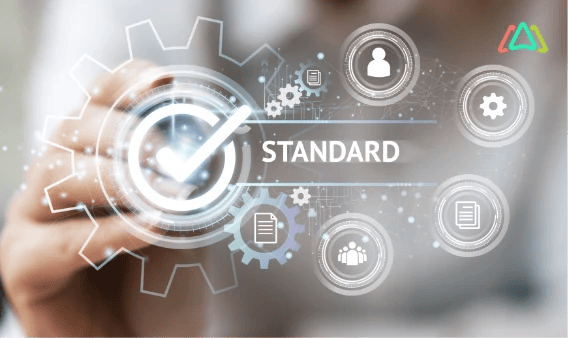
Importance of Adhering to Industry Standards:
Adhering to industry standards is essential for ensuring the safety, reliability, and quality of building maintenance practices. Standards serve as benchmarks for best practices, helping to ensure consistency, compliance with regulations, and the achievement of desired outcomes in building maintenance projects.
Common Standards in Building Maintenance:
Common industry standards in building maintenance cover various aspects of facility management, including:
- Safety Standards: Standards such as OSHA (Occupational Safety and Health Administration) regulations ensure the safety of maintenance personnel and building occupants during maintenance activities.
- Quality Standards: Standards like ISO 9001 provide guidelines for quality management systems, ensuring consistent delivery of high-quality maintenance services.
- Environmental Standards: Standards such as LEED (Leadership in Energy and Environmental Design) promote sustainable building maintenance practices that minimize environmental impact and promote energy efficiency.
- Compliance Standards: Building codes and regulations set by local authorities establish minimum requirements for building maintenance to ensure compliance with safety, health, and accessibility standards.
Adherence to these standards helps maintain buildings' integrity, efficiency, and sustainability while ensuring the safety and well-being of occupants and maintenance personnel.
2. Professional Organizations and Bodies

International Facility Management Association (IFMA)
IFMA is a leading professional association for facility management and building maintenance professionals worldwide. It provides resources, education, and networking opportunities to its members, promoting excellence and innovation in facility management practices. IFMA plays a significant role in setting industry standards, advocating for the profession, and advancing the knowledge and skills of its members.
Building Owners and Managers Association (BOMA)
BOMA is an international organization representing building owners, managers, developers, and service providers. It focuses on advocacy, education, and research to promote excellence in building management and maintenance. BOMA sets industry standards through initiatives such as the BOMA International Floor Measurement Standards and provides valuable resources, including training programs, publications, and industry events.
Role of These Bodies in Setting Standards and Providing Resources:
Professional organizations like IFMA and BOMA play a vital role in setting industry standards by developing guidelines, best practices, and certifications tailored to the needs of building maintenance professionals. They also provide valuable resources such as research publications, educational programs, conferences, and networking events to support the professional development and growth of their members.
Additionally, these bodies collaborate with government agencies, industry stakeholders, and other professional organizations to advocate for policies and regulations that promote the interests of building maintenance professionals and ensure the sustainability and efficiency of built environments.
Sustainable Building Maintenance Practices
Sustainable building maintenance practices are essential for minimizing environmental impact, reducing resource consumption, and promoting the long-term viability and resilience of buildings.

1. Importance of Sustainability in Maintenance
Environmental Impact Reduction:
Sustainable maintenance practices help reduce carbon emissions, energy consumption, and waste generation, thereby mitigating the environmental impact of buildings on ecosystems and natural resources.
Resource Conservation
Sustainable maintenance practices optimize resource use and minimize waste, contributing to the conservation of energy, water, and materials and ensuring their availability for future generations.
Cost Savings
Implementing sustainable maintenance practices can lead to significant cost savings over time by reducing energy bills, water consumption, waste disposal fees, and maintenance expenses.
Enhanced Occupant Health and Well-being
Sustainable buildings provide healthier indoor environments by minimizing exposure to pollutants, toxins, and allergens, thus improving occupant comfort, productivity, and overall well-being.
Regulatory Compliance and Market Demand
With increasing regulatory requirements and growing consumer demand for sustainable buildings, adopting sustainable maintenance practices helps ensure compliance with regulations and enhances market competitiveness.
2. Strategies for Sustainable Maintenance
Energy-Efficient Upgrades:
- Conduct energy audits to identify opportunities for improving energy efficiency in building systems and operations.
- Implement energy-efficient upgrades such as LED lighting, programmable thermostat installation, and HVAC system optimization for improved performance and energy savings.
- Invest in renewable energy sources such as solar panels or wind turbines to generate clean, renewable energy onsite and reduce reliance on fossil fuels.
Use of Eco-Friendly Materials:
- For maintenance and repair projects, choose environmentally friendly building materials with low embodied energy, recycled content, and non-toxic properties.
- Prioritize materials with third-party certifications such as Forest Stewardship Council (FSC) certification for wood products and Cradle to Cradle certification for products designed for circularity and sustainability.
- Implement green procurement policies to prioritize the purchase of sustainable materials and products from suppliers with strong environmental credentials.
Water Conservation Measures:
- Install water-efficient fixtures such as low-flow toilets, faucets, and showerheads to reduce water consumption and minimize wastewater generation.
- Implement landscaping practices such as xeriscaping, rainwater harvesting, and drip irrigation to minimize outdoor water use and promote water conservation.
- Conduct regular inspections and repairs of plumbing systems to address leaks, drips, and other sources of water waste, ensuring efficient water use and preventing water damage.
Building Management Systems (BMS) and its integration with a CMMS
Building Management Systems (BMS), also referred to as Building Automation Systems (BAS), are centralized control systems that monitor, manage, and optimize various building systems and equipment. These systems play an important role in modern building maintenance by providing real-time data, automation capabilities, and centralized control to enhance operational efficiency, occupant comfort, and energy conservation. Read our article on the comparison of different facility management systems to learn more.
Monitoring and Control
BMS continuously monitors and analyzes data from sensors, meters, and equipment throughout the building, including HVAC systems, lighting, security, fire alarms, and access control. This real-time monitoring allows maintenance personnel to detect anomalies, identify potential issues, and respond promptly to alarms or alerts.
Automation and Optimization
A BMS enables the automation of routine maintenance tasks and system operations, such as scheduling HVAC setpoints, adjusting lighting levels based on occupancy, and optimizing energy usage during peak demand periods. Automation helps reduce manual intervention, minimize human error, and ensure consistent performance of building systems.
Energy Management
BMS play a critical role in energy management by monitoring energy consumption, identifying energy-saving opportunities, and implementing strategies to optimize energy usage. They can control HVAC systems, lighting, and other energy-intensive equipment to reduce energy waste and lower utility bills while maintaining occupant comfort.
Fault Detection and Diagnostics
BMS provide fault detection and diagnostic capabilities, allowing maintenance personnel to identify equipment malfunctions, performance degradation, or inefficiencies. By analyzing data trends and system performance metrics, BMS help pinpoint root causes of issues and facilitate proactive maintenance actions to address them.
Remote Access and Control
Many BMS systems offer remote access and control capabilities, allowing maintenance personnel to monitor and manage building systems from anywhere via web-based interfaces or mobile applications. Remote access enables faster response times to maintenance issues, reduces on-site visits, and improves operational efficiency.
How a CMMS Helps with Building Maintenance
In addition to BMS, Computerized Maintenance Management Systems (CMMS) are valuable tools for managing building maintenance activities. CMMS software helps streamline maintenance operations, track work orders, schedule preventive maintenance tasks, manage inventory, and generate reports. Here's how CMMS contributes to building maintenance:
Work Order Management
CMMS centralizes work order management, allowing maintenance teams to create, assign, and track work orders for maintenance tasks, repairs, and inspections. Work orders can be prioritized based on urgency, assigned to specific technicians, and tracked through completion, ensuring accountability and visibility into maintenance activities.
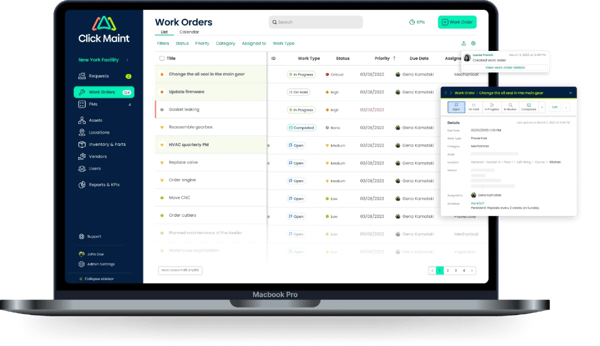
Preventive Maintenance Scheduling
CMMS automates the scheduling of preventive maintenance tasks based on predefined schedules, equipment runtime, or condition-based triggers. By scheduling regular inspections, lubrications, and equipment checks, CMMS helps prevent breakdowns, extend equipment lifespan, and reduce unplanned downtime.
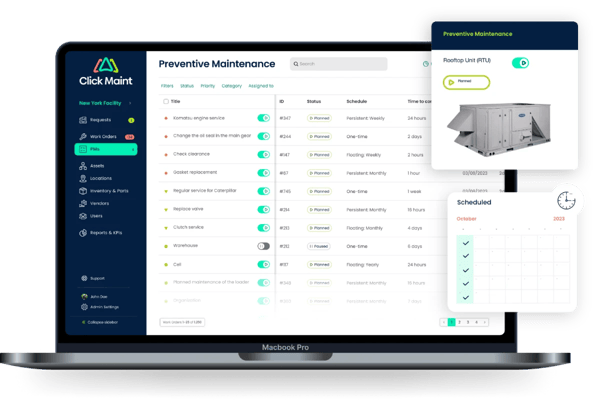
Asset Management
CMMS maintains a centralized database of assets, equipment, and spare parts, including details such as location, maintenance history, warranty information, and maintenance manuals. This comprehensive asset management functionality helps maintenance teams track asset lifecycle, optimize inventory levels, and ensure timely maintenance and replacement of equipment.
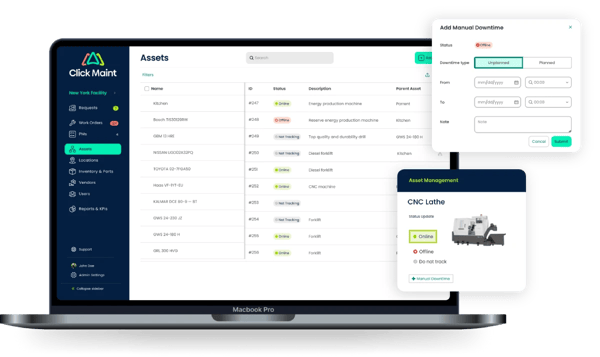
Reporting and Analytics
CMMS provides reporting and analytics tools to analyze maintenance data, track facility management KPIs, and identify trends or areas for improvement. By generating actionable insights and performance metrics, CMMS helps optimize maintenance strategies, allocate resources effectively, and demonstrate the value of maintenance efforts to stakeholders.
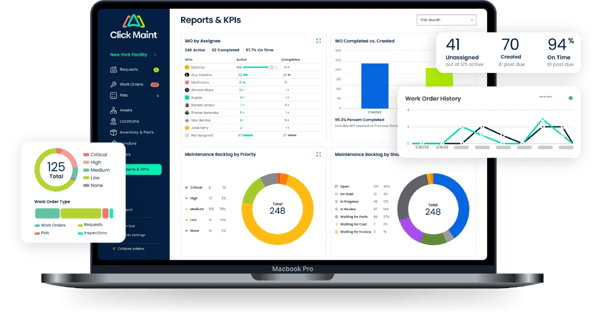
By integrating BMS with CMMS, organizations can achieve seamless coordination between building operations and maintenance activities, optimize resource allocation, and maximize the performance and efficiency of their built assets.
Compliance and Regulations

1. Overview of Building Codes and Regulations
Building codes and regulations are legal standards established by government authorities to ensure the safety, health, and welfare of building occupants and the public. These regulations cover various aspects of building design, construction, operation, and maintenance and are enforced through permits, inspections, and compliance assessments. Common building codes and regulations include:
- International Building Code (IBC): The IBC sets standards for building design and construction, addressing structural integrity, fire safety, accessibility, and other essential aspects of building construction.
- National Fire Protection Association (NFPA) Codes: NFPA codes establish requirements for fire protection and life safety systems, including fire alarm systems, sprinkler systems, exit signage, and emergency egress.
- Occupational Safety and Health Administration (OSHA) Regulations: OSHA regulations govern workplace safety and health, including requirements for personal protective equipment (PPE), hazard communication, electrical safety, and fall protection.
- Environmental Regulations: Environmental regulations address issues such as air quality, water pollution, hazardous materials management, and waste disposal, ensuring compliance with environmental protection laws and regulations.

2. Compliance Requirements for Maintenance Activities
Maintenance activities must adhere to applicable building codes, regulations, and industry standards to ensure compliance and mitigate risks. Compliance requirements for maintenance activities may include:
- Inspections and Testing: Regular inspections and testing of building systems, equipment, and safety devices are required to ensure compliance with regulatory requirements and manufacturer specifications.
- Recordkeeping: Maintenance records, inspection reports, and documentation of repairs must be maintained to demonstrate compliance with regulatory requirements and track the history of maintenance activities.
- Permitting and Licensing: Certain maintenance activities, such as alterations, renovations, or installations of new equipment, may require permits or licenses from local authorities to ensure compliance with building codes and regulations.
- Training and Certification: Maintenance personnel may be required to undergo training and obtain certifications to perform specific tasks safely and in compliance with regulatory requirements, such as working with hazardous materials or operating specialized equipment.
- Emergency Preparedness: Maintenance activities must include provisions for emergency preparedness and response, such as evacuation plans, emergency lighting, fire suppression systems, and first aid facilities, to ensure the safety and well-being of occupants during emergencies.
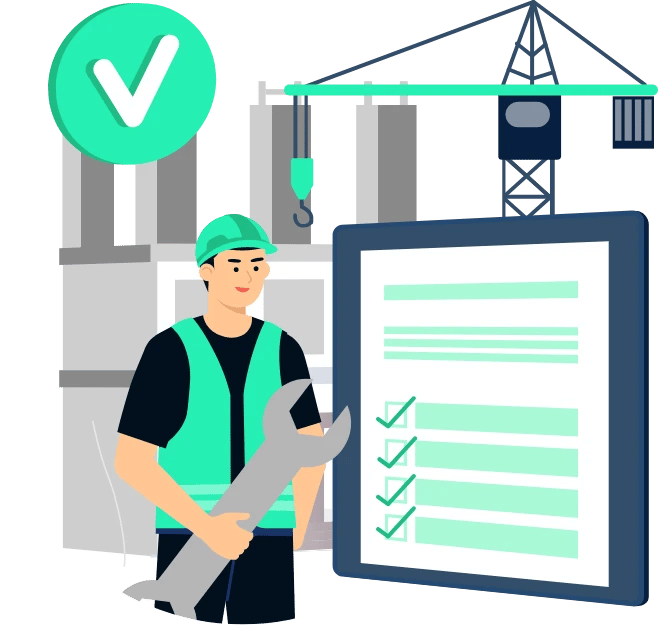
3. Importance of Staying Updated with Regulatory Changes
Staying updated with regulatory changes is important for building maintenance professionals to ensure ongoing compliance and mitigate legal and financial risks. Regulatory changes may include updates to building codes, safety standards, environmental regulations, or industry best practices. The importance of staying updated with regulatory changes includes:
- Legal Compliance: Failure to comply with regulatory requirements can result in fines, penalties, lawsuits, or legal liabilities, compromising the safety and integrity of the building and its occupants.
- Risk Management: Staying informed about regulatory changes helps identify potential risks and liabilities associated with maintenance activities and allows proactive measures to address compliance issues and mitigate risks.
- Professional Reputation: Maintaining compliance with regulatory requirements enhances the professional reputation and credibility of building maintenance professionals and organizations, demonstrating a commitment to safety, quality, and ethical conduct.
- Operational Efficiency: Adhering to regulatory requirements promotes operational efficiency by ensuring that maintenance activities are performed correctly, safely, and in accordance with industry standards, reducing the likelihood of disruptions, downtime, or costly repairs.
By staying informed about regulatory changes, building maintenance professionals can ensure ongoing compliance, minimize risks, and uphold the highest standards of safety, integrity, and professionalism in their maintenance practices.

